Pioneering tri brand Zoot made a carbon running shoe, the Ultra TT 4.0, back in 2014. But it wasn’t until Nike’s Breaking 2 project was launched in 2016 that the carbon super shoe revolution truly began.
In attempting to break the mythical two-hour men’s marathon record, the brand delivered one of the world’s best examples of combining pioneering sporting technological advancements with a marketing bonanza.
Adidas, Asics, New Balance, Saucony and more all followed suit, resulting in marathon times plummeting; a running-speed revolution akin to the Speedo LZR Racer suit in the pool at the 2008 Beijing Olympics.
Elite triathlon is no different: in 2022, Norway’s Gustav Iden smashed the Ironman World Championship run course record in a version of the new On Cloudboom Echo 3, and all top-10 finishers utilised carbon on their Hawaiian marathons.
The big question, though, is do age-groupers really need carbon soles to achieve their multisport goals? At this year’s London Marathon, for example, around half of the 45,000 racers wore carbon shoes, with studies showing that runners in the 3:30 to 4hr range cut their marathon time by around five minutes (more below).
So, while the science- and results-based evidence is stacking up in favour of carbon-plated run shoes, not all super shoes are equal, as the multitude of maximal sneakers on the following pages show.
It’s best to ask yourself what are your race goals and ballpark budget? Navigate to the bottom of this article via the links below for our buying advice. Otherwise, read on for our roundup of the best carbon plate running shoes available right now…
Jump to:
- Best carbon plate running shoes
- How we tested
- How do carbon plate running shoes work?
- What technology is used in them?
- Do carbon plate running shoes make a difference?
- Are they against the rules?
- How long do carbon running shoes last for?
- Are there any disadvantages of carbon shoes?
- Are carbon running shoes good for triathlon?
Best carbon plate running shoes
Asics Metaspeed Edge
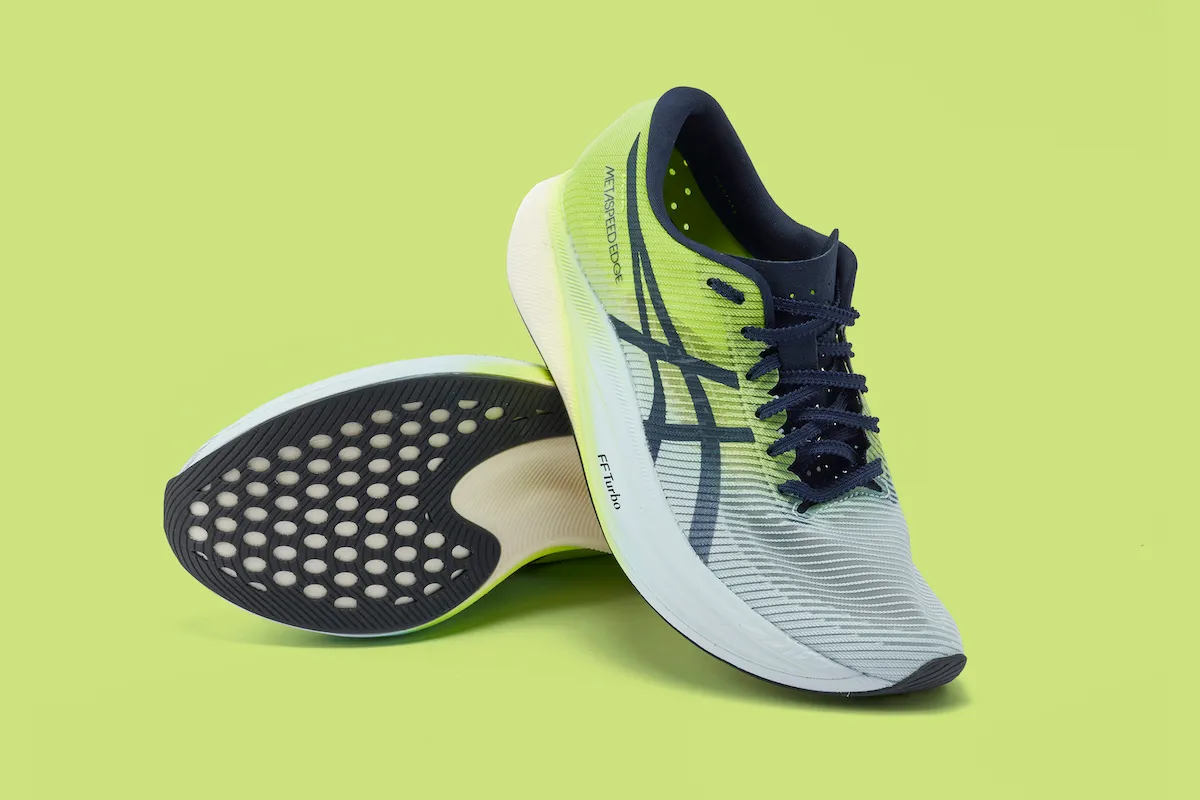
- £225
The Metaspeed range comes in two different styles – the Edge , on test here, which is tailored to athletes that increase cadence when running faster, and the Sky , which is designed for runners that increase their stride.
Right from the very start we found the Edge to look and feel amazing. The brand's FFBlast Turbo foam makes up most of the midsole, which Asics says is 50% lighter than EVA foam. Total weight for this UK size 7 is an impressive 194g.
We enjoyed the combination of bounce and ground feel, while the nimbleness and traction on offer were also welcome.
Despite being lithe in its construction, the tongue provided ample comfort for long efforts, while the upper proved breathable enough on balmy days.
One thing we would note, though, is that there are already signs of wear on the outsole.
See our full Asics Metaspeed Edge review for more.
Verdict: Durability concerns aside, this is a lean, stylish shoe that is well-suited to speedy runners.
Score: 88%
On Cloudboom Echo 3

- £260
One of the first things you notice about the Cloudboom Echo 3 is that it's a pretty lightweight shoe, weighing 211g per shoe in a UK size 7.
Inside the shoe you'll find a full-length carbon plate sandwiched between two layers of foam, which ultimately results in a snappy, propulsive ride.
That said, they do feel firmer than some other options here, while a 10mm heel-to-toe drop saw us switch to heel striking.
Fit is slightly narrower than some competitors also on test and, though nimble, they're not the most supportive.
On the flip side, the upper is incredibly breathable, fits securely and contributes to a decent sockless running experience – key for many triathletes on race day.
The durability of the outsole is also impressive, as is its grip, however, this reviewer did experience some knee troubles during testing.
Read our full On Cloudboom Echo 3 review for more.
Verdict: Durable and suited to triathlon racing in many aspects, but slightly firm and likely to prove divisive.
Score: 75%
New Balance FuelCell SC Elite V3

- £220
With both heel and tongue loops, this shoe from New Balance is particularly transition-friendly for triathletes.
Better yet, the built-in fabric tongue and mesh upper offer impressive levels of comfort for sockless running.
But how's the ride? Well that's pretty good, too, with the 4mm drop encouraging a forefoot strike and a full-length carbon plate delivering an ideal amount of propulsion.
Underfoot, the 40mm stack height helps provide a decent amount of comfort, making these well suited for longer distances.
That said, they also feel both nimble and stable enough for shorter city courses, while a weight of 208g per shoe (UK7) is also welcome.
See our full New Balance FuelCell SC Elite V3 for more.
Verdict: If you want a carbon plate running shoe for triathlon, it'd be hard to look past this offering from New Balance.
Score: 91%
Nike Vaporfly 3
- Buy now from SportShoes

- £234.95
The OG of super shoes is back, but is it back with a bang? Well triathlete Sam Laidlow would argue so, given his impressive performance at the 2022 Ironman World Championship, where he finished second.
The shoe comes with a full-length carbon plate and an impressively low weight of just 183g (per shoe, UK7). That's complimented by an 8mm heel-to-toe drop.
As a result, the ride is a combination of speed, bounce and stability, striking of a fine balance between spongy and firm.
That's all well and good, and makes the Vaporfly well suited to a range of distances, but it does lack a few features that'd be high on a triathlete's wish list.
Namely, the tongue needs a bit of tinkering with to hit the sweet spot and the mesh upper lacks adequate comfort for going long without socks. That said, the latter does offer a decent amount of ventilation.
With socks, comfort is high, with the cushioned heel collar particularly helpful for keeping the foot in place.
Read our full Nike Vaporfly 3 review for more.
Verdict: A fantastic carbon plate running shoe, but one that may not tick all the boxes for triathletes.
Score: 85%
Brooks Hyperion Elite 3
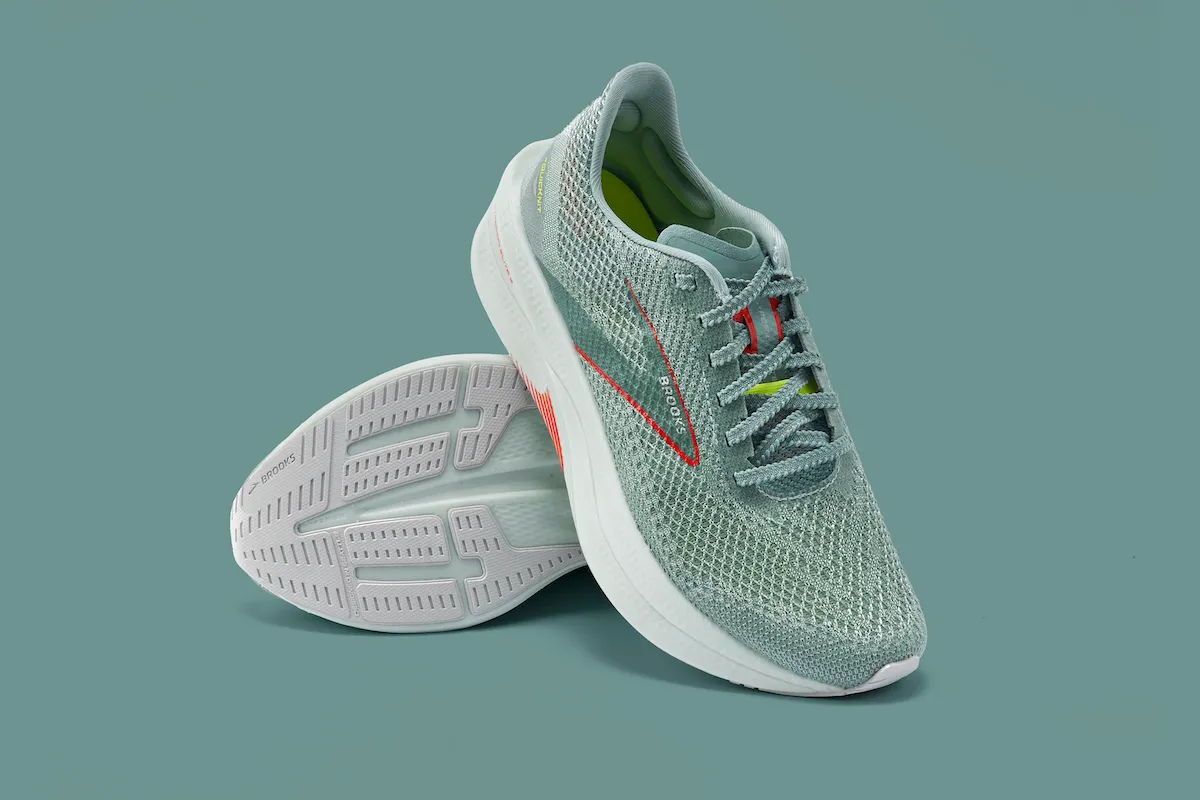
- £200
Brooks was slow to the maximal shoe party and, based on the brand’s unisex Hyperion Elite, is still yet to make a carbon super shoe.
There’s no sign of PEBA-style foam here and it instantly shows with a lack of propulsion on the run and a far firmer ride than all bar the Kiprun here.
It’s a very stable ride, so we had little fear of turning our ankle in these, while the rigid tabs on the outsole give added durability.
The QuicKnit upper is the main upgrade from V2 and it’s great, proving breathable and supportive during June’s heatwave.
The coarse nature isn’t for sockless racing, though, and that comment could apply to the 225g Hyperions overall (the joint heaviest pumps on test).
We’d wear them for mid-tempo training runs, but there are plenty of shoes that can do that at half the price.
Verdict: Like the colour scheme, there’s not too much here to get excited about.
Score: 68%
Under Armour Velociti Elite
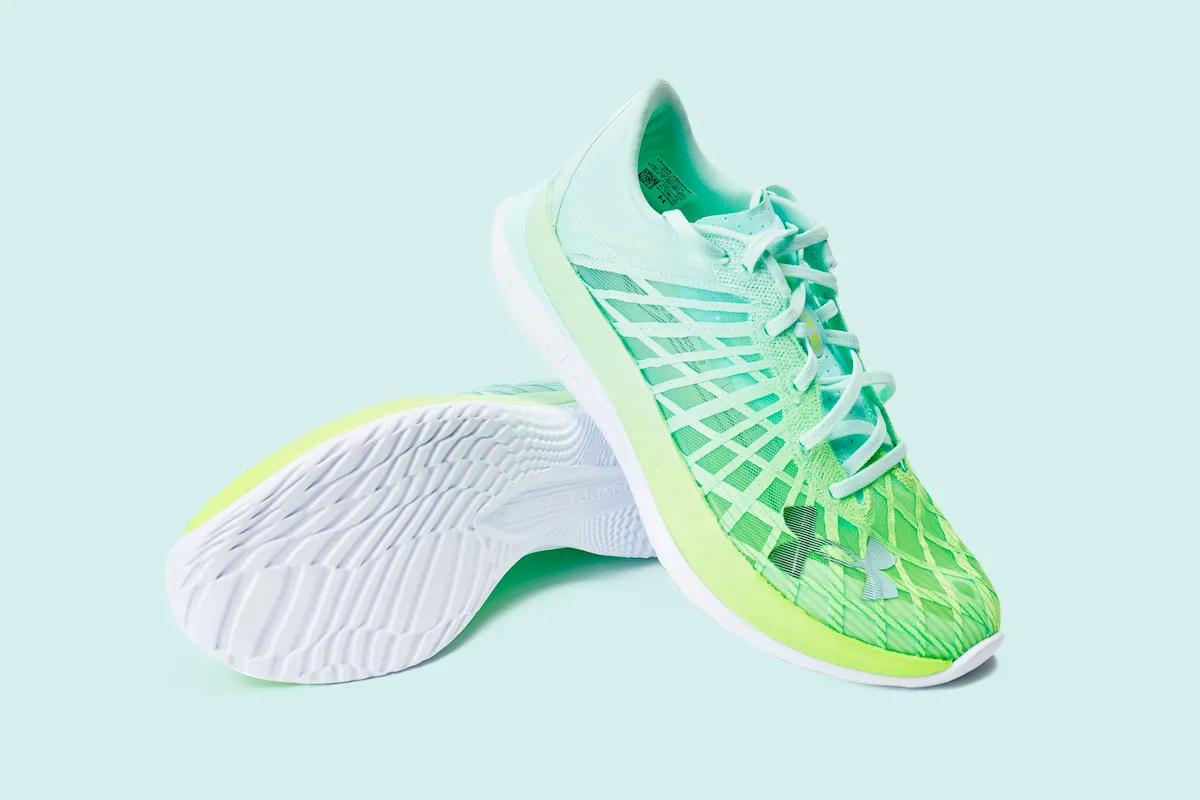
- £225
The new unisex Flow Velociti Elite up the ante of Under Armour’s £140 Flow Velociti 2s by, yep, inserting a carbon foot plate into the midsole.
The run feel is measured and comfortable, and there’s no breaking-in process. A Carbon Lite if you will, which acts as a smooth intro to the genre but does feel less aggressively fast than some here.
That’s not to say they’re not peppy, and they consistently promote an uptempo forefoot running experience.
They’re nimble on the twists of a multisport run course and they retain the tri friendliness of the Velociti 2s with a breathable mesh upper and sockless comfort.
They’re also lighter, coming in at 218g (UK7) compared to the Velociti 2’s 236g.
That plate has added over £80, however, so whether you make the jump will depend on your bank account.
Verdict: Lightweight if pricey carbon racers with plenty of tri appeal.
Score: 84%
Hoka Rocket X 2
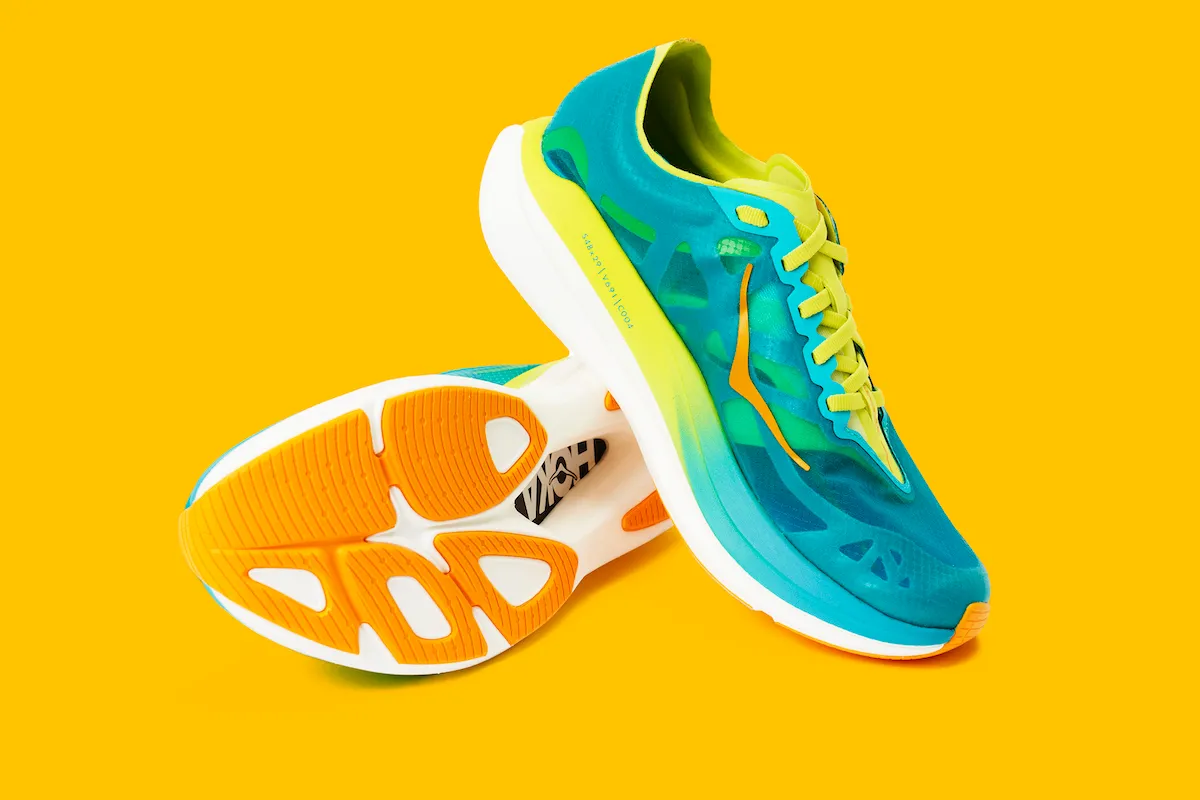
- £220
The Rocket X 2 is a complete transformation of the previous Rocket X – considerably more expensive, propulsive and successful.
The stack height has increased by 6mm to 36mm (the heel-to-toe drop is 5mm) due to the PEBA midsole foam replacing the previous version’s compression-molded EVA foam.
The result is a bouncier, more propulsive ride, but with enough feel for the asphalt.
That foam adds some weight (236g compared to 210g), but Hoka has helped reduce this via the limited outsole grip (wet cobbles beware!) and a paper-thin upper that’s tougher than it looks securely holding the foot and minimising rubbing from internal seams.
Even with elastic laces, though, the they suffer in T2, the lithe heel counter often collapsing and the gusset/tongue taking some fiddling to sit flush.
Verdict: A brilliant shoe for runners in the dry, but less suited to T2.
Score: 84%
Kiprun KD900X

- £129.99
Despite being half the price of pretty much every competitor on the market, Decathlon’s KD900X has enough positives to make them a decent contender in the carbon run shoe sphere.
There’s a wide toe box and roomy upper, but we found the edges of the minimalist tongue tricky to line up. Though the latter does contribute to the shoe's 225g weight (UK7).
The sheer stiffness of the sole and full-length carbon plate offers little give and creates a slightly muted running experience.
That said, they do deliver a welcome dose of forward propulsion, which is helped by an 8mm heel-to-toe drop,.
There’s a decent 1,000km warranty and, while we wouldn't call the upper top, top quality, they perform when navigating technical courses laced with corners.
Verdict: A decent carbon debut offering value and durability in equal measure. See our full Kiprun KD900X review for more.
Score: 82%
Saucony Endorphin Elite
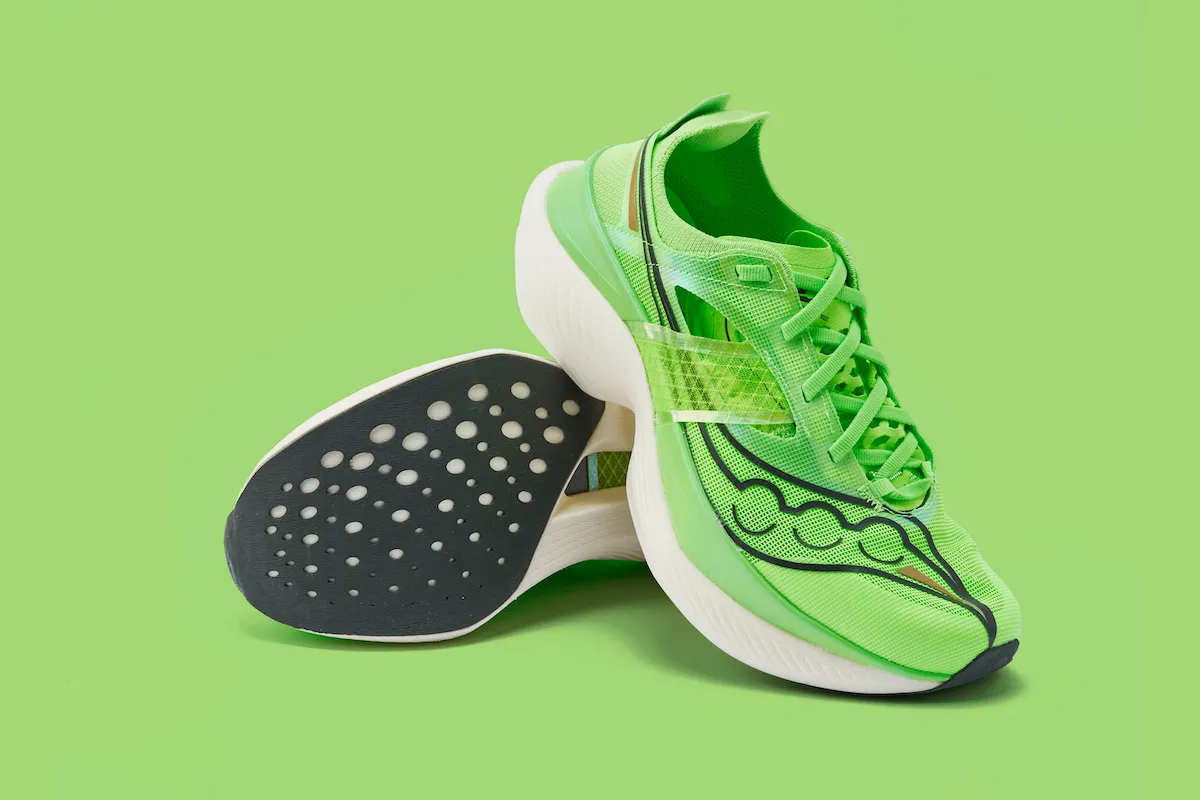
- £280
The Endorphin Elite's 39.5mm wedge of PRRRUN HG foam, 189g weight and carbon plate all combine here to deliver a responsive, enjoyable and swift ride.
As you can see in the image above, the mesh upper is lightweight and barely there in places, which helps with breathability, however it's not the most comfortable for running without socks in a triathlon.
They're not the quickest to pull on either, with the heel counter occasionally collapsing when rushing to get your feet in them. When they are on, they aren't quite as secure as we'd like them to be, either.
Worryingly given the £280 price tag, there's already signs of wear on the outsole.
Otherwise, this is a quick, supportive shoe.
See our full Saucony Endorphin Elite review for more.
Verdict: Concerns about durability, but other wise this is a speedy, stable shoe that is a lot of fun to run in.
Score: 83%
How we tested
Each of the carbon plate running shoes featured here have been personally tested by our team of expert gear testers, who have been taking part in triathlon and running events for a combined total of 30 years.
Every shoe is rigorously tested over a series of runs, covering distances from 5k to long-distance runs, such as half-marathons and marathons.
Our testing took place against a set of criteria that includes comfort, propulsion, weight, support, grip and durability.
We typically take test shoes on the same routes, with similar levels of training readiness, so we can compare run times.
Any shoe that has scored above 90% is genuinely class-leading. Those that score between 80-90% are still among the best, while those from 70-80% are decent performers, but have one or two issues holding them back from top marks.
How do carbon plate running shoes work?
The major aim of carbon run shoes is to improve the running economy of an athlete, allowing you to move faster and more efficiently, while at the same time using less energy.
The trainer’s carbon plate should produce a spring-like effect that minimises the energy needed to propel from the tarmac with each stride.
If having a carbon plate in the shoe sounds like it could produce a harsh and rigid runner akin to running in bike shoes, the slab of midsole foam softens the ride and reduces the metabolic cost to the runner, while also increasing the responsiveness and energy return of a shoe.
This increase in cushioning should increase the shock-absorbing aspects of the shoe, which in turn should lower the chance of muscular damage, especially handy for long-distance triathletes facing the demands of a half or full marathon after the swim and bike legs, and also anyone wanting to train day after day.
What technology is used in them?
Whereas a decade ago racing shoes were once stripped-back flats with minimal midsoles, now oversized (or maximal) footwear reigns supreme.
The influence of Hoka and, more latterly, Nike looms large in the carbon shoe world, with the stack height limit of 40mm (see right) meaning a lot of foam is being utilised.
A feature of the Nike Alphafly and Vaporfly, Asics Metaspeed Sky and more, PEBAX is the poster child of 2023’s foam world, and has proven to be the foam with the most energy return.
It’s also reported to be the lightest, allowing brands to create those 40mm-deep wedges of foam without adding huge weight, while it doesn’t adjust to temperature changes like some TPU-based midsoles can.
Do carbon running shoes make a difference?
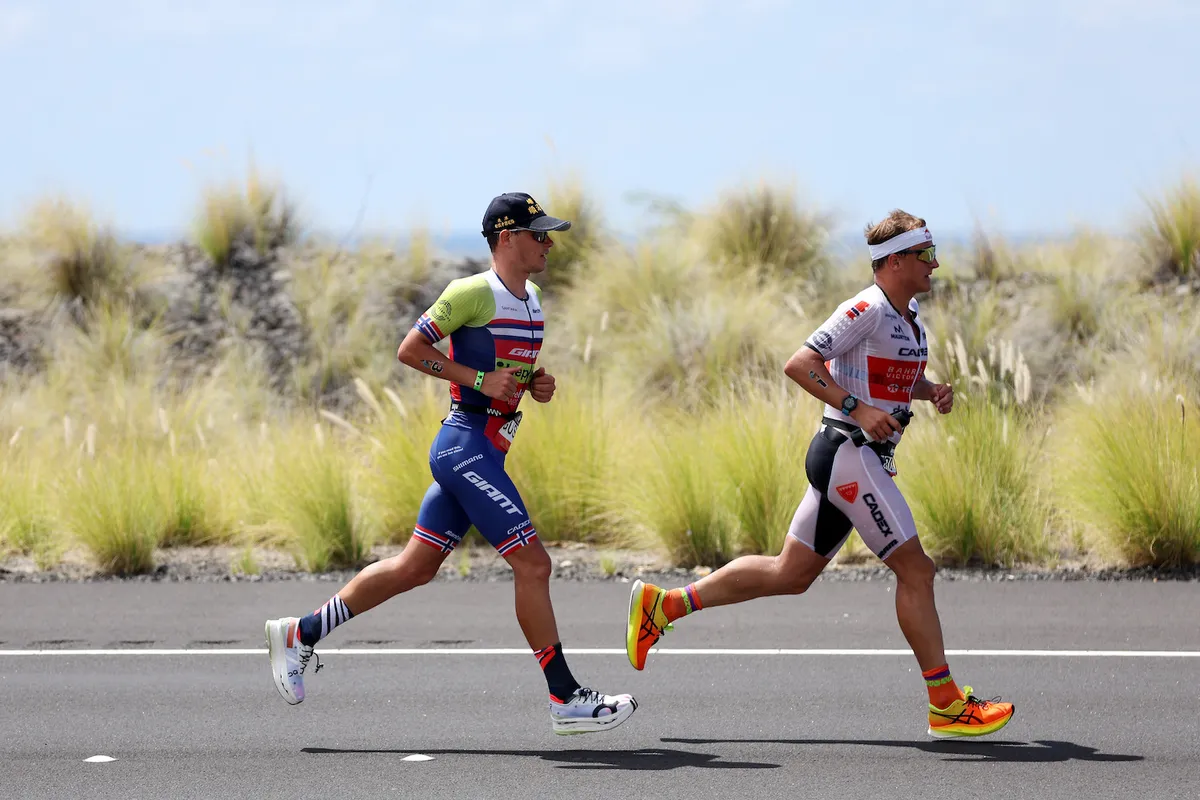
The Nike Vaporfly 4% proudly states the benefits to runners in its title, with studies showing that running economy improved by 4% when wearing the carbon-plated shoe.
And it’s not just elite runners who’ll benefit from the propulsion gains, with runners in the 3:30 to 4hr range seeing marathon times cut by around five minutes, potentially a decisive amount if you’re chasing PBs or age-group honours.
Those gains, of course, come at a fiscal cost, with just one shoe on test here below £200.
There’s also the argument that the level playing field of running has evaporated in this technological revolution, the purity trampled by a taut carbon strip wrapped in a chunky wedge of PEBAX. But that’s an argument for another time…
Are they against the rules in races?
Carbon-plate running shoes all sit around the 30-40mm stack height, which is a lot of foam/shoe.
While the heel-to-toe drop is usually fairly minimal (around 5mm), if you’ve become used to wearing minimal shoes or like to feel the ground when road running, there’s a certain amount of numbness when striding out in carbon super shoes.
The maximum height for a shoe stack, as set by World Athletics (and inherited by World Triathlon), is that 40mm mark. Any higher and stability issues will be heightened to excessive levels.
How long do carbon running shoes last for?
The research on the longevity of carbon super shoes isn’t conclusive, but anecdotally we have worries.
Our doubts stem from how long that carbon plate maintains its taut propulsiveness and, moving to the outsole, how long the minimal tread lasts before wearing away.
The latter is where brands look to reduce weight, meaning that some of these shoes lack wet weather grip, too.
Are there any disadvantages of carbon shoes?

Besides the concerns around durability, the carbon plate is rigid and can lead to a lack of bend in the shoe and an unforgiving ride, resulting in added strain and the chance of injury.
That being said, the current crop have largely improved this via the forgiving midsole foam.
Are carbon running shoes good for triathlon?
While many of the carbon shoes here have proven themselves on marathon road-running courses, the unique nature of tri place additional and myriad demands on them.
The performance in the bike-to-run transition is one of the biggest variables to consider, with many shoes boasting featherweight tongues and lithe heel counters, which are ideal for lowering the shoe’s weight, but can take plenty of time to align with the foot or can crumble on impact with the heel, respectively.
You’re also likely to be putting sweaty post-bike feet into the shoe as well, so look at how efficient the aeration is, and take their ability to be worn sockless into account if you prefer to run without socks.
Triathlon running courses, especially short-course city-centre ones, can also be tight and twisting multi-lap affairs instead of the point-to-point nature of standalone marathons, so look at how well the shoe can navigate changes in direction.
Value and aesthetics, weight and durability have also been considered here; the top pumps being those that tick the boxes for the all-important tri race day.
